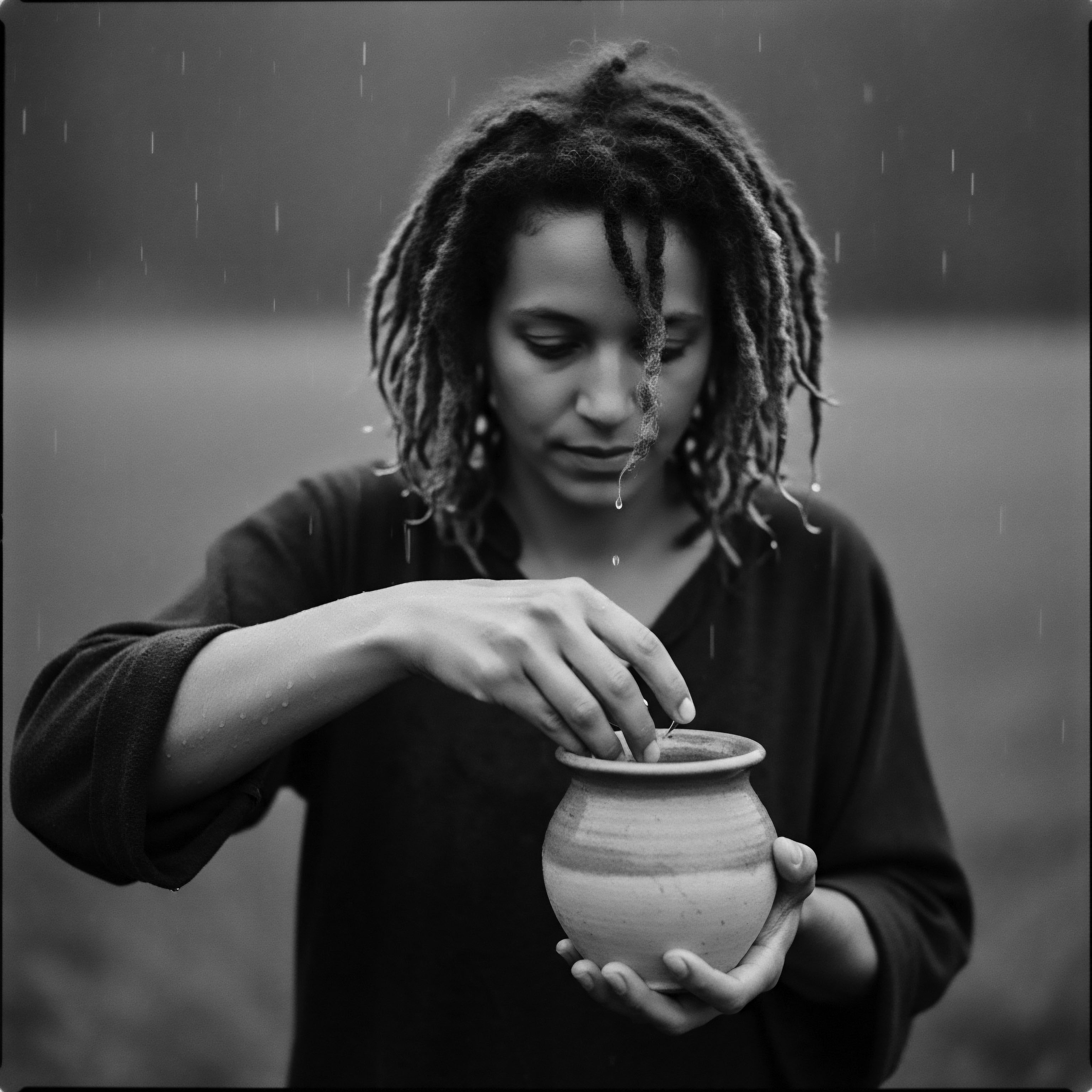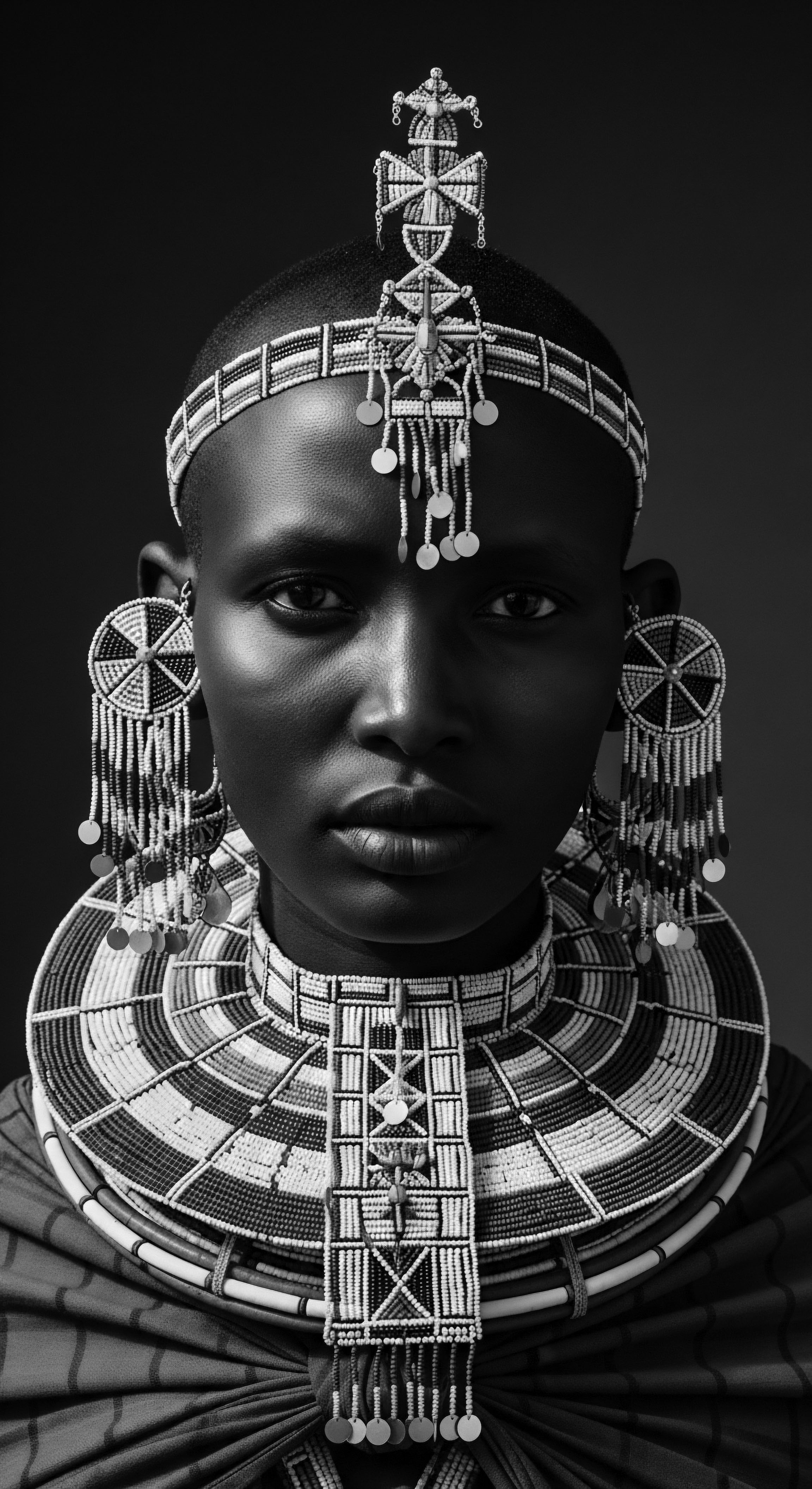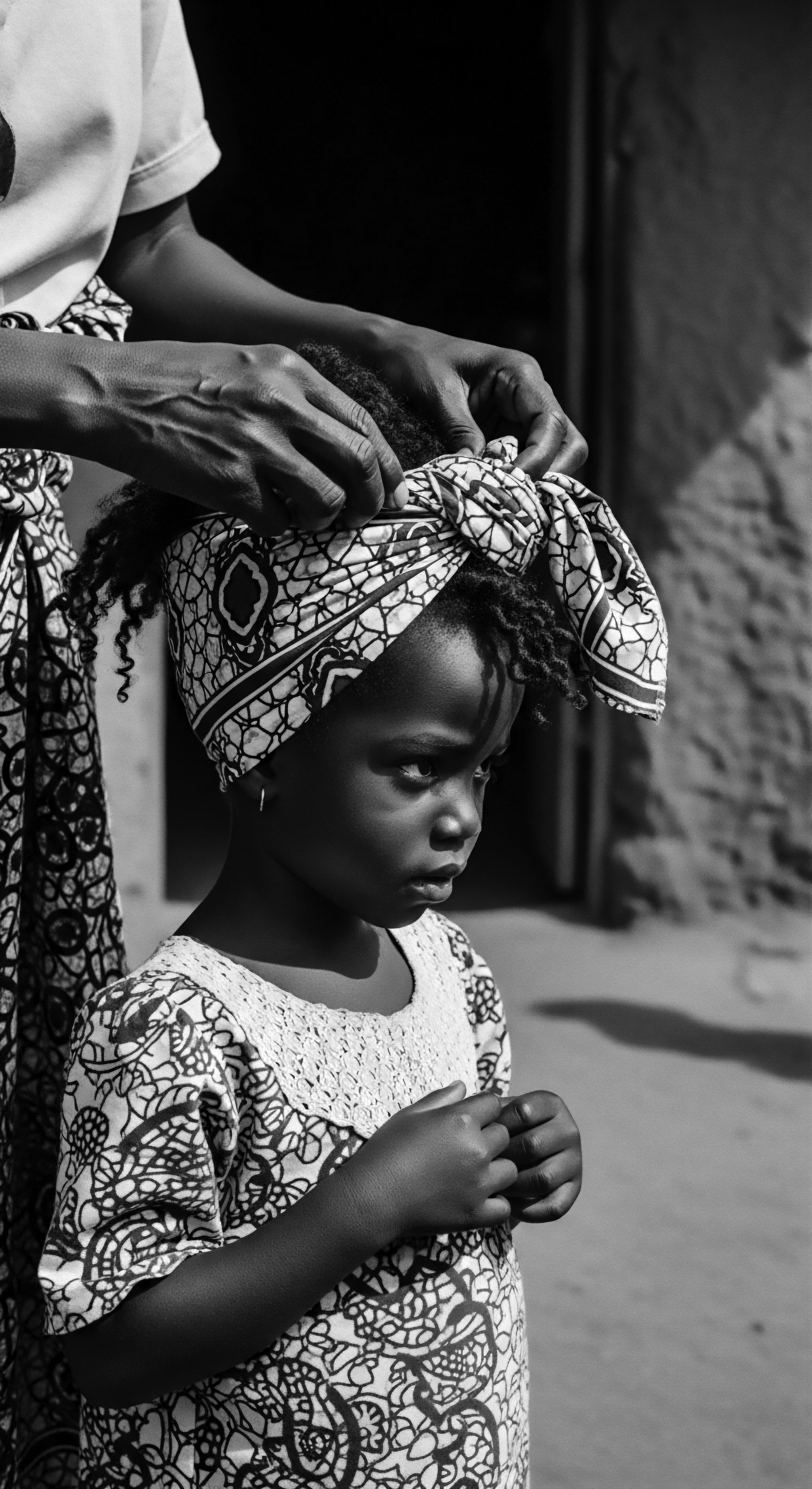
Roots
Beneath the shimmering cascade of light or the quiet embrace of night, lies a truth whispered by every coil, every wave, every kink of textured hair ❉ it holds stories. These are not merely tales of growth and resilience, but sagas etched into the very helix, echoing the ancestral lands and the profound wisdom of those who walked before. For generations, long before the chemists’ flasks bubbled or marketing campaigns spoke of ‘miracle solutions,’ our forebears understood the language of the earth. They knew the gentle caress of the aloe vera leaf, the nourishing generosity of the baobab fruit, the strengthening touch of hibiscus blossoms.
This deep, abiding connection between plant remedies and textured hair identity is not an accidental discovery; it is a profound testament to observation, survival, and a reverence for the natural world that shaped not just how hair was cared for, but how identity was expressed and preserved. It is a dialogue between flora and follicle, a continuous conversation across epochs that speaks to the very soul of a strand.
The foundations of textured hair care find their deepest roots in an intimate understanding of hair’s unique anatomical and physiological makeup, viewed through an ancestral lens. Imagine ancient communities, their hands intimately acquainted with the diverse textures within their kin, observing how certain plants interacted with these strands. They saw the curls that absorbed moisture quickly, the coils that sought more lubrication, the waves that held definition with different botanical aids. Modern trichology, with its precise microscopy, confirms what these seasoned practitioners intuitively grasped ❉ textured hair, with its often oval or elliptical cross-section and numerous bends along the shaft, naturally experiences challenges like moisture retention and susceptibility to breakage due to its structural intricacies.
Yet, these perceived ‘challenges’ were never seen as flaws in ancestral wisdom; they were simply characteristics that invited specific, plant-based responses. The very structure of the hair informed the selection of remedies.
Beyond mere appearance, hair, especially textured hair, held and still holds immense spiritual, social, and cultural weight within Black and mixed-race communities. It served as a vital marker of tribal affiliation, marital status, age, wealth, and even spiritual connection. The meticulous care of hair, often using specific plant concoctions, became a ritualistic affirmation of these identities. For instance, among many West African groups, hair was considered a conduit to the divine, a spiritual antenna (Byrd & Tharps, 2014).
Therefore, the botanical preparations applied were not just cosmetic; they were often seen as protective elixirs, imbued with the life force of the plants themselves, guarding the wearer and enhancing their connection to their heritage. This understanding of hair as a sacred extension of self dictated a meticulous, intentional approach to its care, one intrinsically linked to the botanical pharmacopeia of their environment.
The historical bond between plant remedies and textured hair identity reflects an ancestral language of earth, survival, and deep reverence for nature.

Understanding the Hair’s Deepest Structure
The anatomy of textured hair, from an ancestral and modern scientific viewpoint, reveals its remarkable complexity. Each strand originates from a follicle, a tiny organ beneath the scalp. In straight hair, the follicle is generally round, guiding the hair shaft to grow in a relatively straight path. For textured hair, however, the follicle tends to be elliptical or flattened, causing the hair to bend and twist as it emerges.
This unique shape dictates the curl pattern – from loose waves to tight coils. The bends in the hair shaft create points where the cuticle, the outermost protective layer, can lift, making the hair more prone to losing moisture and potentially more susceptible to damage.
Ancestral practitioners, lacking microscopes, observed these effects through empirical knowledge. They saw that some hair types dried out more quickly or felt coarser. Their plant-based remedies responded to these observable traits. For instance, plants rich in mucilage, such as various mallows or the bark of certain trees, would have been recognized for their ability to provide slip and retain moisture, effectively ‘sealing’ the cuticle in a way that modern science now understands.
- Follicle Shape ❉ Determines the degree of curl, from circular for straight hair to elliptical for coily textures.
- Cuticle Integrity ❉ The outer layer, often raised at the bends of textured strands, necessitating moisture-retaining plant oils and butters.
- Moisture Affinity ❉ Textured hair’s unique structure means it craves hydration, historically met by humectant-rich plant extracts and oils.

How Did Ancestral Classifications Shape Care?
While modern classification systems for textured hair, like the Andre Walker or Lochness scales, are relatively recent constructs, ancestral communities developed their own nuanced ways of distinguishing hair types. These were often not scientific taxonomies but rather culturally embedded descriptors tied to lineage, region, or even social roles. A particular curl pattern might have been known by a local name, indicative of its appearance and the specific plant preparations or styling techniques best suited for it.
For example, hair that was tightly coiled might have been known to require regular applications of specific nutrient-rich plant oils to maintain its pliability and shine, passed down through oral traditions. This indigenous knowledge system, though informal, was remarkably precise in its application of plant remedies to specific hair needs, ensuring the vitality of strands that were so intrinsically tied to communal identity.
| Aspect of Classification Purpose |
| Ancestral Understanding (Pre-19th Century) Identity marker, social status, spiritual connection, practical care guide. |
| Contemporary Understanding (Post-20th Century) Product recommendation, styling guide, scientific analysis. |
| Aspect of Classification Methodology |
| Ancestral Understanding (Pre-19th Century) Empirical observation, oral tradition, communal knowledge sharing. |
| Contemporary Understanding (Post-20th Century) Microscopic analysis, standardized scales (e.g. curl patterns 3A-4C), chemical composition. |
| Aspect of Classification Plant Remedy Selection |
| Ancestral Understanding (Pre-19th Century) Deep, localized plant knowledge; intuitive understanding of plant properties for specific hair textures. |
| Contemporary Understanding (Post-20th Century) Active ingredient formulation based on scientific research; global sourcing of botanical extracts. |
| Aspect of Classification The shift from holistic, culturally rooted classification to scientific taxonomy still points to the enduring search for tailored hair care solutions. |

Ritual
The rhythms of life in ancestral communities were often synchronized with the natural world, and nowhere was this more apparent than in the care and adornment of hair. Plant remedies were not simply ingredients; they were integral to the very rituals of hair styling, shaping not only the physical appearance of textured hair but also its cultural expression. From intricate braiding patterns that told stories of lineage to sculpted styles that communicated status, plant-based preparations facilitated, protected, and defined these artistic and symbolic expressions. The historical connection between plant remedies and textured hair identity reveals itself most vibrantly in the deliberate application of botanical knowledge to create and preserve these meaningful styles.
Consider the ancient practice of protective styling, a cornerstone of textured hair care heritage. Braids, twists, and locs were not merely aesthetic choices; they served vital practical purposes, shielding the hair from environmental damage, simplifying daily maintenance, and promoting length retention. To achieve and maintain these complex styles, ancestral communities relied heavily on the bounty of the earth. Plant oils, like those derived from castor beans or palm kernels, would have been generously applied to lubricate the scalp and strands, aiding in the manipulation of hair and providing a protective barrier.
Infusions of various leaves and barks, known for their strengthening or soothing properties, were massaged into the scalp before braiding to foster health and comfort. These preparations made the hair pliable, reducing breakage during styling, and also added a symbolic layer of spiritual or physical protection to the wearer. The preparation and application of these plant remedies were often communal affairs, fostering bonds and passing down intergenerational knowledge of hair artistry and its botanical underpinnings.
Plant remedies were not merely ingredients but integral components of hair styling rituals, defining cultural expression and preserving textured hair heritage.

How Did Plant Materials Facilitate Traditional Styling?
The hands that sculpted ancient African coiffures knew the secrets of the forest and field. They recognized the slickness of certain roots, the binding power of plant resins, and the vibrant hues derived from botanical pigments. These natural materials were instrumental in achieving the precise, often elaborate, styles that marked identity. For example, the mucilaginous properties of plants were used to create gels and holding agents.
Imagine a traditional stylist preparing a concoction from flaxseeds or okra pods, boiling them gently to extract a viscous liquid. This natural gel would then be applied to the hair to smooth frizz, define curls, and help intricate braids hold their shape for extended periods, all while providing moisture. The knowledge of which plant provided the right texture and hold for a specific style was a cherished form of ancestral craftsmanship.
A powerful example of plant remedies intersecting with textured hair identity, particularly within the context of resilience and cultural continuity amidst profound adversity, comes from the experiences of enslaved Africans in the Americas. Stripped of their material possessions and often forced into environments vastly different from their homelands, they relied on remembered plant knowledge and new botanical discoveries to care for their hair. Okra (Abelmoschus esculentus), a plant of African origin that thrived in the tropical and subtropical climates of the Americas, became a clandestine, yet potent, hair remedy. Its pods contain a rich mucilage—a slimy, gelatinous substance—that provided remarkable slip and moisture when prepared as a hair rinse or conditioning treatment.
This was far from a trivial act. In a system designed to strip away identity, the ability to care for and style one’s hair, even in secret, was an act of profound self-preservation and cultural resistance. The use of okra, as documented in historical accounts and ethno-botanical studies, provided essential lubrication for detangling and managing tightly coiled hair, preventing breakage that could result from harsh labor and lack of proper tools (Carney, 2001). Beyond its practical benefits, the continued use of an African-derived plant for hair care linked individuals to their ancestral heritage, providing a quiet, yet powerful, affirmation of self and community in the face of dehumanization.
These botanical practices, adapted and passed down through generations, became whispers of home, symbols of resilience, and tangible connections to a past that could never be fully erased. The okra plant, in this context, transcended its simple botanical properties to become a deeply meaningful symbol of enduring identity.

Traditional Tools and Plant Pairings
The traditional toolkit for textured hair care was often sparse but highly effective, a testament to ingenuity and a deep connection to natural resources. Far from the array of brushes and combs available today, ancestral tools often included simple bone or wooden combs, fingers, and repurposed natural materials. What truly amplified the efficacy of these tools were the plant remedies used alongside them.
- Wooden Combs ❉ Often carved from resilient local trees, these combs, when used with lubricating plant oils like palm or coconut, minimized friction and breakage, allowing for gentle detangling.
- Fingers ❉ The primary tool, always, for textured hair. The efficacy of finger-detangling and styling was greatly enhanced by the use of slippery plant preparations such as okra mucilage or aloe vera gel, allowing for seamless manipulation.
- Natural Fibers ❉ Certain plant fibers were sometimes used for braiding or to create decorative wraps, often pre-treated or softened with plant-based emollients to ensure flexibility and comfort.

Relay
The lineage of textured hair care flows uninterrupted through time, a vibrant relay race of knowledge passed from elder to youth, from tradition to innovation. The historical connection between plant remedies and textured hair identity lives on, not as a relic of the past, but as a dynamic, living philosophy that continues to inform holistic care and problem-solving. This deep wisdom, rooted in ancestral practices, finds resonance in contemporary approaches, demonstrating how the earth’s bounty remains a cornerstone for healthy, resilient textured hair. The meticulous regimens cultivated by our forebears were not haphazard; they were informed by generations of empirical observation, leading to a profound understanding of what the hair needed to thrive, from cleansing to conditioning, from protection to restoration.
At the heart of this relay is the belief that hair health is inextricably linked to overall wellbeing. Ancestral wellness philosophies often viewed the body as an interconnected system, where imbalances in one area could affect another. Thus, plant remedies applied to the hair and scalp were often considered not just external treatments but extensions of internal care, drawing on plants revered for their medicinal properties.
This holistic perspective meant that a plant used for a digestive aid might also be understood to have beneficial properties for scalp health when applied topically, a testament to a comprehensive view of botanical power. The wisdom of creating personalized regimens, drawing from the vast pharmacopeia of the earth, was a heritage passed down, adapting to new environments and challenges, but always holding dear the central role of plant life.
The enduring connection between plant remedies and textured hair identity reflects a dynamic, living philosophy of holistic care passed through generations.

How Do Ancestral Practices Guide Modern Regimens?
Building a personalized textured hair regimen today often involves a conscious return to principles long understood by ancestral practitioners. The emphasis on gentle cleansing, deep conditioning, and protective styling—all core tenets of modern textured hair care—echoes ancient wisdom. Many traditional plant remedies functioned as multipurpose agents, offering cleansing, conditioning, and nourishing properties in one application. For example, saponin-rich plants were used for gentle lathering, providing a natural alternative to harsh chemical cleansers, while their inherent conditioning properties prevented stripping the hair’s natural oils.
The “wash day” ritual, a significant aspect of textured hair care in many contemporary households, finds its distant genesis in communal cleansing and care ceremonies where plant infusions, clays, and butters were prepared and applied with great intention. The long hours dedicated to these practices were not merely about hygiene; they were acts of self-care, community bonding, and a reinforcement of cultural identity, all enabled and supported by the presence of plant-based ingredients.

The Nighttime Sanctuary ❉ An Inherited Wisdom?
The practice of protecting textured hair during sleep, often through wrapping or covering with soft materials, is a lineage of care that stretches back through centuries. While the modern satin bonnet or silk scarf is a relatively recent innovation in material science, the underlying principle is ancient ❉ safeguarding the hair from friction, moisture loss, and tangling during periods of rest. Ancestral communities understood the fragility of textured hair and the importance of its preservation. They might have used soft animal skins, woven plant fibers, or even smooth leaves as wraps to preserve intricate hairstyles, extend the life of plant-based treatments, and maintain the hair’s moisture.
The wisdom to prevent breakage and maintain the integrity of the hair structure was particularly critical when plant-based styling aids, such as stiffening pastes or defining gels, were applied, as proper nightly protection ensured the longevity of these labor-intensive styles. The bonnet, therefore, is not just a piece of fabric; it is a direct descendant of an ancestral imperative to protect and cherish hair, an act of care steeped in historical necessity and botanical ingenuity.
- Moisture Retention ❉ Plant oils and butters applied during the day were sealed in by protective wraps, keeping hair supple.
- Friction Prevention ❉ Soft coverings minimized rubbing against harsh surfaces, a key factor in preserving delicate textured strands.
- Style Longevity ❉ Elaborate plant-aided styles were maintained for longer periods, reducing the need for frequent manipulation.

Addressing Hair Concerns Through Botanical Knowledge
For generations, plant remedies were the primary recourse for addressing common textured hair concerns, from dryness and breakage to scalp irritation and thinning. Ancestral healers and hair specialists possessed an encyclopedic knowledge of local flora and its properties. For a dry, itchy scalp, they might have turned to cooling, anti-inflammatory plants applied as poultices or infused oils. For fragile strands, strengthening barks or protein-rich seeds might have been ground into treatments.
This traditional approach to problem-solving contrasts with, yet often complements, modern scientific understanding. For example, while contemporary research identifies specific compounds in plants responsible for anti-fungal or antioxidant activity, ancestral practitioners arrived at similar solutions through generations of trial, observation, and inherited wisdom. The power of these plant remedies extended beyond mere chemical action; they were infused with cultural significance, prepared with intention, and applied with reverence, adding layers of efficacy that modern formulations often cannot replicate. This deep-seated connection to the earth’s healing properties for hair challenges continues to shape the identity of textured hair care.

Reflection
As we trace the intricate pathways between plant remedies and textured hair identity, we confront a powerful truth ❉ the strands on our heads are far more than keratin and pigment. They are living archives, repositories of ancestral knowledge, resilience, and profound cultural memory. The journey through the roots, rituals, and relay of plant-based hair care reveals a story that predates modern science, a narrative woven into the very fiber of Black and mixed-race heritage. It is a story of ingenuity in adversity, of beauty cultivated from the earth’s embrace, and of identity asserted through the tender, intentional acts of care.
The ‘Soul of a Strand’ ethos, in its deepest sense, asks us to look beyond superficial appearances and connect with the enduring spirit of our hair. It invites us to honor the hands that first crushed a leaf for its conditioning properties, the voices that first sang over a steaming pot of herbal infusion, and the communities that found strength and self-expression in the sculpted beauty of their hair. This historical connection is not a static piece of the past; it is a continuous current, guiding us towards a more holistic and respectful relationship with our hair. It reminds us that in every application of a botanical oil, every gentle detangling with a plant-derived slip, we are not simply caring for our hair; we are participating in a living legacy, celebrating the enduring wisdom of our forebears, and affirming the luminous, unbound helix that defines our textured hair heritage.

References
- Byrd, A. D. & Tharps, L. D. (2014). Hair Story ❉ Untangling the Roots of Black Hair in America. St. Martin’s Griffin.
- Carney, J. A. (2001). Black Rice ❉ The African Origins of Rice Cultivation in the Americas. Harvard University Press.
- Clarke, L. (2013). Textured Hair ❉ A Complete Guide to Care and Styling. Milady.
- Harris, J. (2009). The Black Hair Care Revolution ❉ A Guide to Beautiful Hair Naturally. Africa World Press.
- Lewis, J. E. (2003). The New Black ❉ A Natural Hair Revolution. New World Library.
- Opoku-Agyemang, S. (2020). The Black Hair Book ❉ A History of Black Hair Through Time. DK Publishing.
- Roberts, K. A. (2019). Hair Power ❉ The Cultural History of Hair in African American Communities. University of Texas Press.
- Tharps, L. D. & Byrd, A. D. (2001). Hair Story ❉ Untangling the Roots of Black Hair in America. St. Martin’s Press.
